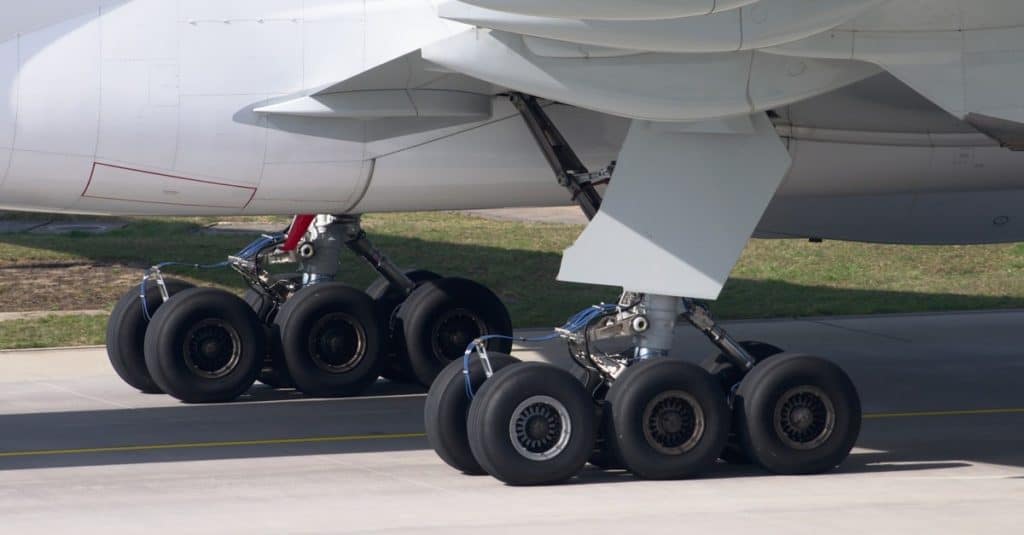Have you ever wondered how much an airplane weighs? Well, buckle up and get ready to explore the world of aviation! The weight of an airplane is a fascinating topic that often leads to jaw-dropping numbers. Let’s take a closer look at how much these colossal flying machines typically weigh.
When it comes to airplanes, weight is a crucial factor that affects everything from fuel consumption to flight performance. So, just how heavy are these behemoths of the sky? Well, the weight of an airplane can vary depending on its size, type, and purpose. From small single-engine planes to massive commercial jets, the range of weights is truly impressive.
So, why does an airplane weigh so much? Airplanes are made up of various components, including the structure, engines, fuel, and cargo. Each of these elements adds to the overall weight. To ensure safe and efficient flight, aircraft designers meticulously calculate and distribute the weight, making sure the plane maintains proper balance and stability.
So, the next time you see an airplane soaring through the sky, take a moment to appreciate the engineering marvel that it is. The weight of an airplane is not just a number; it’s a testament to human innovation and a reminder of our ability to defy gravity. So, fasten your seatbelt, and let’s embark on a captivating journey to uncover more about the fascinating world of aviation!

How Much Does an Airplane Weigh: The Weighty World of Aviation
When it comes to aviation, we’re often fascinated by the marvels of flight, the speed, and the engineering behind airplanes. But have you ever stopped to wonder just how much an airplane weighs? From small propeller planes to massive commercial jets, the weight of an aircraft plays a crucial role in its performance, safety, and even cost. In this article, we’ll dive deep into the world of airplane weights, exploring different types of aircraft and the factors that contribute to their weight.
The Weighty Basics: Aircraft Weight Categories
Before we delve into specific numbers, it’s important to understand the different weight categories of aircraft. Generally, aviation experts classify airplanes into three main categories: light aircraft, general aviation aircraft, and commercial aircraft. Light aircraft, including small propeller planes and recreational aircraft, typically weigh under 12,500 pounds (5,670 kilograms). General aviation aircraft, which include business jets and larger propeller planes, range from 12,500 pounds to 300,000 pounds (136,077 kilograms). Lastly, commercial aircraft, such as passenger jets like Boeing 737 or Airbus A320, can weigh anywhere from 300,000 pounds to a staggering 1.3 million pounds (589,670 kilograms).
So, now that we know the weight categories let’s dive deeper into the factors that contribute to an airplane’s weight. These factors can be broadly categorized as the structural weight, operating weight, and payload.
Structural weight refers to the weight of the aircraft’s structure itself, including the airframe, wings, engines, landing gear, and other systems. It is the core weight of the aircraft and forms the foundation upon which all other weights are added. Structural weight can vary greatly depending on the design of the aircraft, materials used, and the number and size of engines.
The Importance of Operating Weight: Fuel, Oil, and More
The next key factor that contributes to an airplane’s weight is the operating weight. This includes the weight of fuel, oil, hydraulic fluid, and other consumables required for the aircraft to operate. Fuel alone can add significant weight to an aircraft, especially in the case of long-haul flights. To give you an idea, a Boeing 747 can carry around 57,285 US gallons (216,840 liters) of jet fuel, which can weigh up to 383,000 pounds (173,729 kilograms)!
In addition to fuel, aircraft also carry a varying amount of oil for lubrication, hydraulic fluid for operating systems like flaps and landing gear, and other consumables like water for drinking purposes. These fluids may seem trivial, but their weight adds up, especially in larger commercial jets.
Another factor that falls under the operating weight is the usable load, which includes the weight of passengers, cargo, and baggage. For commercial flights, this is a crucial consideration as airlines need to ensure they stay within the maximum takeoff weight limits mandated by regulatory authorities. In addition to passengers and cargo, the weight of catering supplies, trolleys, and even in-flight magazines can impact an aircraft’s weight.
The Numbers Game: Comparing Different Types of Aircraft
Now that we have a better understanding of the factors that contribute to an airplane’s weight let’s take a closer look at some specific examples. Starting in the light aircraft category, a popular model like the Cessna 172 Skyhawk generally weighs around 2,450 pounds (1,111 kilograms). Moving up to the general aviation category, the iconic Cessna Citation XLS+ business jet tips the scales at around 21,000 pounds (9,525 kilograms).
As we venture into the realm of commercial aircraft, the numbers surge dramatically. For instance, the Boeing 737-800, a common workhorse for many airlines, has an empty weight of around 91,800 pounds (41,638 kilograms) and can carry a maximum takeoff weight of approximately 174,200 pounds (78,960 kilograms). Scaling the charts in terms of sheer size and weight, the legendary Boeing 747-8, known as the “Queen of the Skies,” boasts an empty weight of 485,300 pounds (220,402 kilograms) and can reach a maximum takeoff weight of a mind-boggling 987,000 pounds (447,696 kilograms).
It’s worth mentioning that these weight figures can vary depending on the specific model, configuration, and extra features of an aircraft. Nevertheless, they provide a fascinating glimpse into the incredible range of weights within the aviation world.
Key Takeaways: How much does an airplane weigh?
- An airplane can weigh anywhere from a few hundred pounds to several hundred thousand pounds.
- The weight of an airplane depends on its size, type, and purpose.
- A small personal aircraft typically weighs around 1,000 to 6,000 pounds.
- Commercial passenger planes can weigh between 100,000 to 900,000 pounds.
- The weight of an airplane includes the aircraft itself, fuel, passengers, cargo, and other accessories.
Frequently Asked Questions
When it comes to airplanes, one common question is how much they weigh. In this section, we’ll explore the weight of airplanes and provide answers to some related questions.
Q: How does the weight of an airplane affect its performance?
A: The weight of an airplane plays a crucial role in its performance. When an aircraft is heavier, it requires a longer runway to take off and a greater distance to come to a stop during landing. Additionally, a heavier airplane may have reduced maneuverability and climb performance. Therefore, it’s essential for aircraft manufacturers and operators to carefully manage weight to ensure optimal performance and safety.
On the other hand, a lighter aircraft can offer benefits such as improved fuel efficiency, shorter takeoff and landing distances, and better maneuverability. These advantages are particularly significant for smaller aircraft or those operating in environments with limited runway length or other operational restrictions.
Q: What factors contribute to an airplane’s weight?
A: Several factors contribute to an airplane’s weight. The primary components include the aircraft’s structure (fuselage, wings, and tail), systems (engines, fuel, and avionics), furnishings (seats, cabin equipment), and payload (passengers, cargo). Each component adds up to create the overall weight of the aircraft.
In addition, the fuel load significantly affects an aircraft’s weight, and it varies depending on the length of the flight and expected contingencies. Other factors that need to be considered include catering supplies, potable water, and the weight of materials used for routine maintenance and repairs.
Q: How much does a typical commercial airliner weigh?
A: The weight of a typical commercial airliner can vary depending on its size and model. For example, the Boeing 747-8, one of the largest airliners, has a maximum takeoff weight of around 987,000 pounds (447,700 kilograms). On the other hand, smaller regional jets may have a maximum takeoff weight of around 50,000 to 100,000 pounds (22,680 to 45,360 kilograms).
It’s important to note that an airplane’s weight can fluctuate throughout a flight as fuel is consumed. The weight of passengers and cargo also impacts the total weight of the aircraft. Pilots and airlines closely monitor these factors to ensure safe operations and optimal fuel efficiency.
Q: How is an airplane’s weight measured?
A: The weight of an airplane is typically measured using scales specifically designed for aircraft weighing. These scales, often located at airports or maintenance facilities, are large platforms capable of supporting the weight of an entire aircraft. The airplane is parked on the scales, and the weight is recorded.
It’s important to accurately measure an airplane’s weight because it affects various aspects of flight planning, including fuel calculations, takeoff and landing distances, and aircraft performance. Additionally, adhering to weight limitations is crucial for safety and compliance with aviation regulations.
Q: How does the weight of an airplane compare to other vehicles?
A: Airplanes tend to be significantly heavier than most other vehicles due to their construction and the need to withstand the forces of flight. For example, an average car weighs around 2,900 pounds (1,315 kilograms), while a small general aviation airplane may weigh between 1,000 and 4,000 pounds (450 to 1,800 kilograms).
On the other hand, larger commercial airplanes can weigh hundreds of thousands of pounds (tens of thousands of kilograms). For comparison, a fully loaded cargo or passenger train can weigh several hundred tons, but it’s important to note that trains distribute their weight across many axles, while airplanes rely on wings and landing gear to support their weight during flight and ground operations.
How Much Does A Airplane Weigh? #shorts
Summary
So, now you know all about the weight of an airplane! We’ve learned that airplanes can weigh anywhere from a few hundred pounds to hundreds of thousands of pounds. The weight of an airplane depends on its size, materials used, and what it’s carrying.
Airplane weight is important because it affects many things, like how fast the plane can go and how much fuel it needs. The weight of an airplane is measured using special scales and can change during a flight as fuel is burned and passengers come and go.
Remember, the weight of an airplane is carefully managed to make sure it can fly safely and efficiently. Airplane engineers and pilots work together to make sure planes are balanced and not too heavy. So next time you see an airplane in the sky, you can impress your friends with all your knowledge about how much it weighs!
In conclusion, airplane weight is a fascinating topic and understanding it helps us appreciate the wonders of flight. Airplanes are incredible machines that rely on careful weight management to soar through the skies. Whether you’re a future scientist or just a curious kid, knowing about airplane weight opens up a whole new world of possibilities to explore!

After visiting more than 60 countries, I have probably been on every type of plane there is and visited countless airports. I did my very first international solo trip to South Africa at the age of only 16 and haven’t really stopped traveling since.
Despite the adventurous travel itch, I do have a nerdy side as well – which is satisfied by writing about all things aviation “too boring” for my regular travel blog.
